Of
Bogs and Benthos: even more assembly photos
Progress November 11, 2010
A textile wall hanging, ~52" H x 72" W,
portrays some relationships in lake ecology.using embroidered text and
graphs.
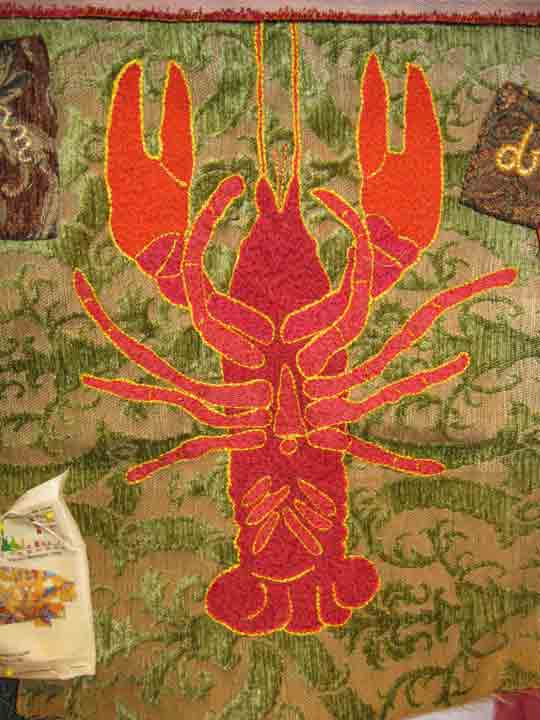
approx 13" L x 10" W
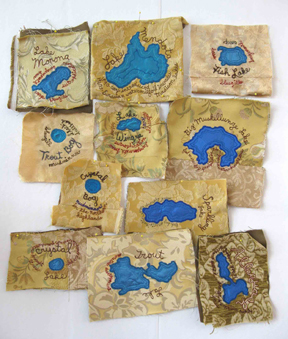
LTER
study lakes (pictured at right) are embroidered with
information such as the number of fish and zooplankton species, some species
names and challenges to the lake's ecosystem.
Northern Highlands area near Boulder Jct, WI:
Sparkling Lake, Crystal Lake, Crystal Bog, Trout Lake, Big Muskellunge
Lake, Allequash Lake, Trout Bog
Yahara Lakes District, Madison, WI:
Lake Mendota, Lake Monona, Lake Wingra, Fish Lake
The text and graphs outline some of the challenges in the study lakes using terms from chemical measurement, plant and lake ecology as design elements
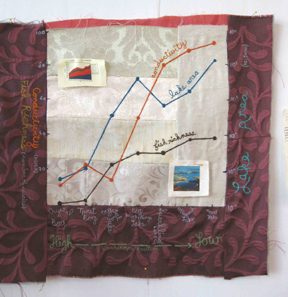
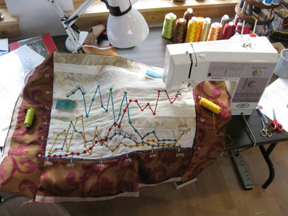
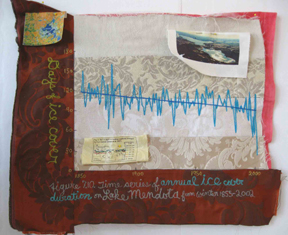
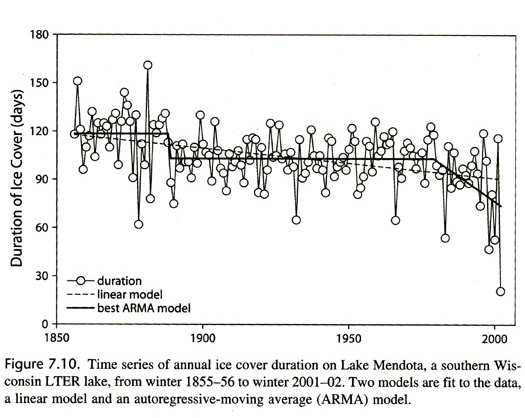
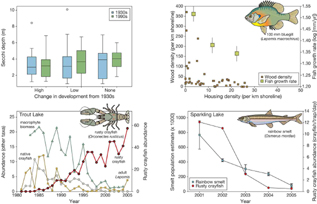
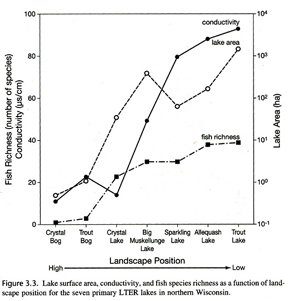
Some terms are defined with embroidery (pictured right):
Conductivity is directly related to the levels of dissolved ions in the water. Conductivity levels will generally increase if there is an increase in the concentration of pollutants in the water.
a Macrophyte is an aquatic plant. In lakes they serve as a nursery area for larval fish and a habitat for macroinvertibrates.
Eutrophication: a body of water acquires a high concentration of nutrients especially phosphates and nitrates
Benthos: lake bottom or organisms living there
Phenology is the study of the timing of natural events. Phenological records provide comparisons between years and geographic regions. Examples include the date of emergence of leaves and flowers, the first appearance of migratory birds. Because many such phenomena are very sensitive to small variations in climate, especially temperature, phenological records can be a useful proxy for temperature in historical climatology, especially in studying climate change.
Coarse woody
habitat are fallen dead trees and the remains of large branches
on and near the lakeshore. Some fishes prefer to nest near CWH. CWH provides
a surface for growth of invertibrates as well as shelter for young fishes.
It is crucial for sustaining desirable fishes and fisheries in lakes.
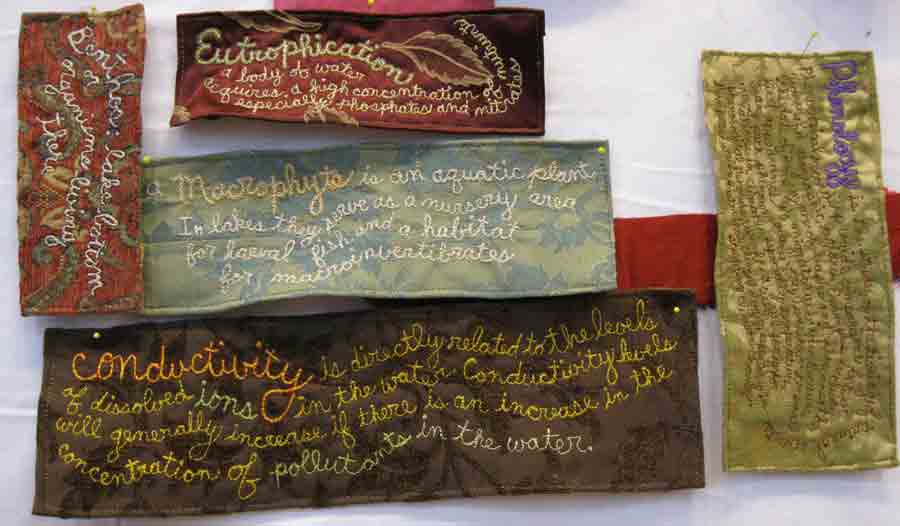
Riparian and Littoral Zones: Riparian is land near the lakeshore. Littoral is the near-shore part of the lake, where the water is shallow. Because lake levels tend to fluctuate over time, a given point in space might be riparian one year and littoral another year.
Current shows
6 min 40 sec